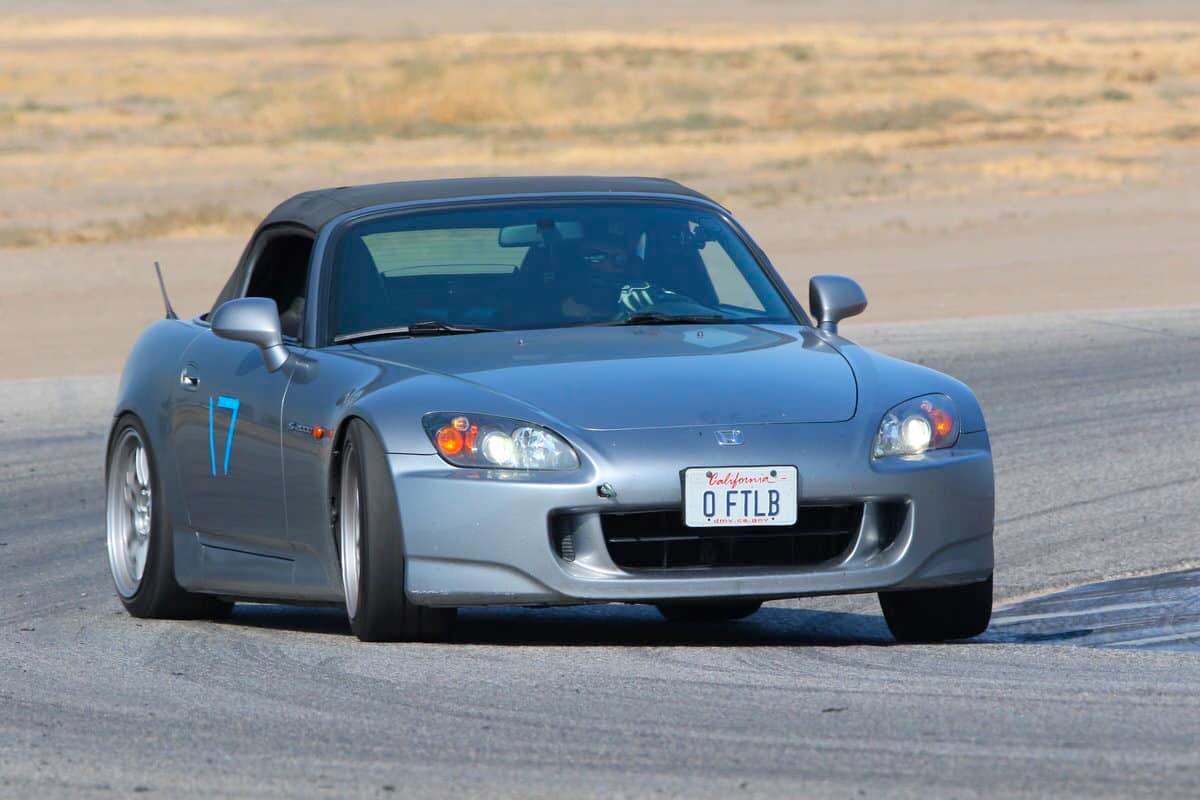Nate's AP2 S2000: Carefully Peeling The Layers
It takes balls and a certain level of comfort with high-speed oversteer, but Nate Hackman can wrestle his understated S2000 around Buttonwillow 13CW in 1:56.7 if all his stars align. No big wings, no major weight reduction, not even a hardtop — the car just works wonderfully in semi-stock trim.
Simple and largely untouched, but it has the right parts: Ohlins TTX, 17x10” Apex VS-5RS, AP Racing 5000Rs up front, and Stoptech C42s in the rear. Because Nate picked a minty low-mile car, he’s been able to avoid replacing a lot of timed-out parts.
Nate aimed to keep it as basic as possible; building upon the car’s natural strengths, like its willingness to rotate, and minimizing its factory flaws, like its narrow powerband.
“The S2000 is the first car i've owned that legitimately makes me feel clumsy sometimes,” Nate admits.
Unless you’re singing at the top all the time, the shift into the next gear can drop you out of the F22’s powerband. Nate addressed this by taking advantage of the late model F22C’s drive-by-wire system. With a dyno tune by Blacktrax and lowering the VTEC engagement point to 3,600 revs, it’s torquier and more usable at lower revs. Though by no means a stump puller, having a slightly wider powerband makes it possible to keep the car on the pipe, even after a misshift or an overslowed corner.
A tune and a test pipe help lift the curve a little in the higher revs, but it’s still no more powerful than 220-odd horsepower at the wheels and won’t feel lightning quick unless the car is kept singing. But to keep it on the pipe through the faster stuff takes a little commitment. If you can pick the line to stay flat through Club Corner, which means avoid pinching the car off, and then navigate Bus Stop without upsetting the car upon landing, the speedometer will read 100 before Riverside, with a minimum speed in the mid-90s on a healthy set of RE-71RS.
After Tony Rodgriguez’s MR-S, this S2000 is the closest thing to a two-stroke kart in roadcar form I’ve driven. Not only does the engine need to be pinned in the high revs to gather much speed, but it just continues to turn in an exhilarating way that doesn’t always breed confidence. It always keeps you on your toes, though.
It never rolls over and plows, even if the front’s been working hard through long corners, and that means that you’ve gotta be quick with your hands when it decides to finally oversteers. That transition into oversteer happens without a huge amount of warning, unfortunately. It takes a good set of eyes and an internal gyrometer to keep the car from spinning, since the steering does not load in a way that warns of an impending slide.
Pole Positions help keep Nate and his passenger stay snug; a must when so little feel comes through the wheel.
“It's very demanding of the driver, which I love, but you need fast hands to stay on top of it. While the steering is razor sharp and responsive, the steering feel is dogshit, so you have to rely more on the rest of your senses to tell when the car's going to let go, and you have to react very quickly,” Nate describes.
More than urgency and exhilaration, the car offers the driver options. Being front-mid-engine, it does dance around quite noticeably, and the aim is to get it to rotate through the middle of the corner, but doing so correctly requires some delicate balancing.
It still moves around at the rear through the quick transitions, but his setup has helped the car from biting your head off should you make most mistakes. Some it will seriously punish, but it keeps the car driveable in the right hands.
“I have the big Karcepts front bar and a tiny NC Miata rear bar, which means you can chuck it into the faster stuff with a little more confidence. The downside with this setup is that it's less playful in lower speed corners, so it requires more finesse in hairpins to drive around the push. It will rotate if you're on the brakes or on the throttle, although you have to play with braking and gas to maintain that rotation.”
Demonstration of this fine line can be seen in his navigation of Cotton Corner in the footage below:
Though adding some aero bits might help lean on the rear in the faster sections, Nate’s decided it’s better to refrain from adding a wing; that would be de-clawing it and, ironically, removing a little of that feral quality that makes this car so thrilling.
Amidst nervous laughter, I gained a little confidence in the car with every session; it reveals itself to you in stages, like peeling an onion reveals a new layer. The exacting nature of the car can be written about in greater detail, but suffice to say that the slightest change in brake release or steering application can have a drastic impact on the car’s balance. This forces a very careful analysis of your technique. That can be frustrating, but it makes it all the more satisfying when you get it just right.
It’s a complex, demanding car with sharp edges and a way of scaring off the idiots, but it doesn’t feel all that unfriendly once you get to know it. Like a stray cat, it’s best if you approach this car with some caution initially, but it should become your friend with a little time and patience.




